Wireless transceivers, including wireless transceiver RF transceiver modules, are becoming essential devices in contemporary communication systems as they assist in transmitting and receiving data over multiple platforms. The guide strives to present wireless transceivers and facilitate an understanding of their operation, mainly the transceivers’ functions, design aspects, and uses. Emphasis will be placed on signal encoding, frequency generation, and interconnection within a network to give the readers a fair taste of how the devices function upon various network topologies. The article will explain the latest developments and the future outlook in the wireless domain, addressing what this field of communication will look like. You must be either an experienced engineer or a naive, interested person; this guide will prepare you to understand the basic nature of transceivers and their improvements.
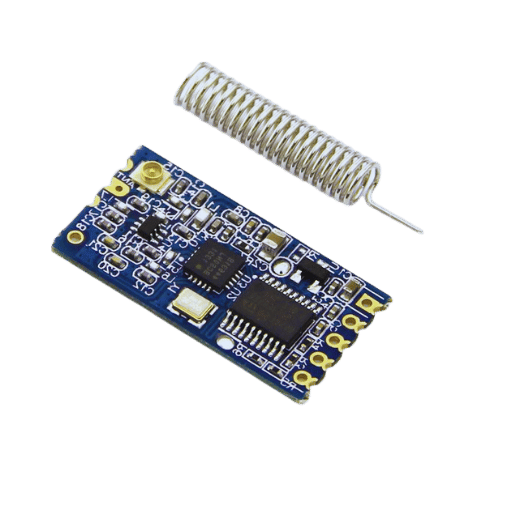
A wireless transceiver is designed for both the transmission and reception of data. Being central to wireless communication systems, such as headsets or modems, it has two primary functions: encoding and sending a signal over a carrier frequency and receiving and demodulating the incoming signal. Usually, they operate over some frequency ranges and use different modulation types. Wireless transceivers are integrated into various devices, from mobile handsets to satellite systems, carrying out wireless data communication.
A wireless transceiver is a self-contained electronic gadget used in telecommunications to transmit and receive radio waves and signals. It is composed of two major parts: the transmitter, which generates the signals & sends them out, and the receiver, which receives the signals, decodes & demodulates them from within a wireless communication device. Thus, wireless transceivers ease the transfer of information via electronic devices and radio communication within some frequencies and on different connected instruments, starting from portable electronics to complex satellite communication systems.
Wireless transceivers work via radiowaves to send and receive information to and from devices. Such a procedure commences with the transmitter part that encodes digital information into radio waves using modulation techniques like Frequency Modulation (FM) or Amplitude Modulation (AM). These modulated signals are radio frequency signals that are radiated over an antenna. Then, the transceiver antenna of the receiver intercepts the radio, as mentioned above, frequency signals and employs its demodulator to reconstruct the coded information. Signal processing is also undertaken to quickly receive the data to eliminate the noise and any other interference that might be present. The transceivers[] are designed to work in different bands of frequencies, which are changed depending on the purposes, for instance, Wi-Fi, Bluetooth, and cellular networks, to optimize connection and communication quality. This complicated process indicates the importance of transceivers in retaining continuity in wireless stats over different technologies.
Wireless transceivers play a crucial role in a number of emerging technologies today as they provide convenience and portability, especially in wireless communication devices. Wireless transceivers also have a Galia and smartphone lifespan and are widely built into tablets and laptops due to the need to add a Wi-Fi and Bluetooth function. Driving Assist Equipment (DAE) and V2V helps reduce traffic congestion by effectively communicating with other vehicles and structures. These wireless transceivers in the industrial environment allow remote monitoring and acquisition of data and systems aiming for operational improvements and maintenance activities. The aged wireless transceivers are also applicable in health care, where medical instruments that require secure and efficient wireless transfer of data are used. The increasing number of IoT devices would widen the applications due to their use in smart homes, smart cities, and automated industries. All these technologies involve transceivers and, in every case, consider transceiver connectivity pattern components. For that, there is a reason for that technology to be reasonably termed the Internet of Everything.
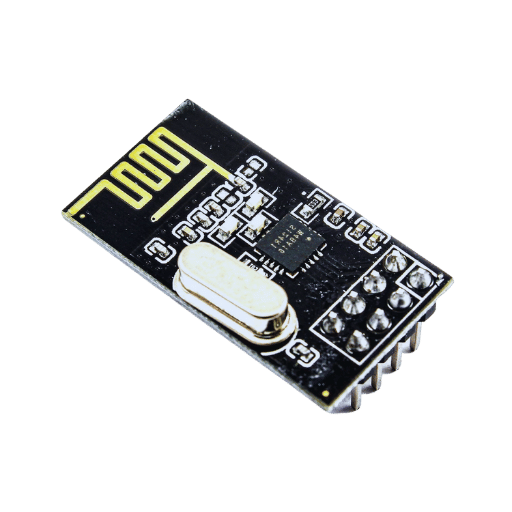
The 2.4G wireless transceiver module with an SMA antenna contains several units that perform the functions controlled by the module. First of all, the antenna is necessary to capture and send signals by converting electrical energy into electromagnetic waves and vice versa. The RF (Radio Frequency) front end consists of amplifiers, filters, and mixers for a controlled, conditioned analog signal to be processed. A local oscillator circuit inside the module creates the necessary frequencies required for modulating and demodulation processes. There is also a digital signal processor (DSP) that handles the digital signals involving the processing and other related activities. Control electronics that combine these elements have also been designed, enabling the elements to work together without hindering their normal functions. All these make it possible for the wireless transceiver to work efficiently in terms of communication systems by utilizing a variety of frequencies and communication protocols appropriate for the particular application.
RF, otherwise referred to as radio frequency, is very important in wireless transceivers where there is a need for air transmission or reception of EM waves with no physical connections. The RF section modulates and demodulates information signals onto high-frequency carrier waves that are passed through the antenna. This entails ensuring that weak incoming sounds/images are pumped up and unwanted ones are cut off so that the information being transferred over is as correct and clear as possible. Furthermore, RF technology also defines the transceiver system’s distance, bandwidth, and effectiveness, determining how effective and reliable it will be in various operational environments.
The wireless transceivers include an antenna that transmits and receives data. It determines the performance achieved in terms of the quality and the communication link range. If incorporated well design, an antenna enables maximum capture and emission of signals of required bandwidths to enhance the performance of the transmission system through the reduction of transmission losses. It is also still best to engineer the antenna’s geometries and apertures to the frequency ranges used for transmission to maximize gain and efficiency. This makes it easier to establish networks in places where the strength and quality of the signals are of utmost importance.
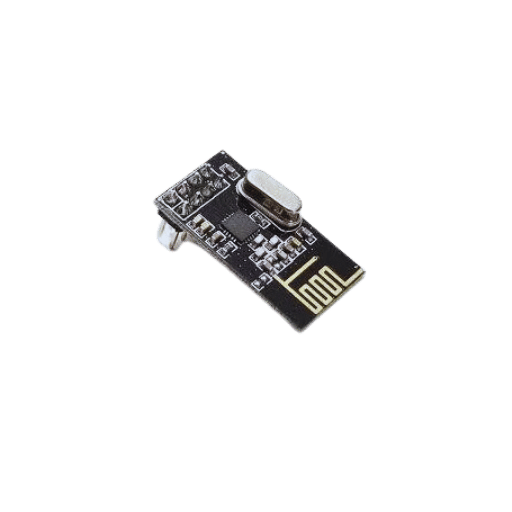
RF transceiver modules are the working parts of wireless communication systems that enable transmitting and receiving information over radio waves. Within these RF transceiver modules, various types exist that are designed for varying applications and frequency bands. The most popular include narrowband transceivers that are sensitive enough to allow only lower data communications over long distances; wideband transceivers, which permit high-speed communication for applications like Wi-fi and Bluetooth; and ultra-wideband transceivers, which are employed in high resolution and short-range applications like radar and positioning. Such modules have different characteristics in terms of range, power consumption, data rate, and compatible frequency, and therefore, a suitable transceiver module has to be chosen depending on the desired purpose and environmental parameters.
The transceiver modules with SMA (SubMiniature version A) antennae are multidisciplinary and can be used for high-frequency applications. SMA-type connectors are characterized by accuracy, strength, and reliability when used both inside the buildings and outside. These connectors are ideal for use when there is a need for a good physical connection and reproducible RF performance. Transceiver modules with SMA antennas enable high signal quality with low interference levels, making them suitable for telemetry, IoT, and cellular communication. Furthermore, screw-type connectors are used in SMA-type connectors, given that the internal connection is secured, and this is important to uphold the quality of the signal transmission in harsh operating conditions.
The nRF24L01+PA+LNA RF wireless transceiver module has a few features that make it one of the best in terms of wireless communications. This module features Power Amplifier (PA) and Low Noise Amplifier (LNA) components to improve its transmission range and receive signals. Operating in the 2.4GHz ISM band, the data transmission rate is up to 2Mbps, which can be used efficiently in high-speed applications. The module’s advanced ShockBurst™ technology increases battery life by enabling remote devices using a modem to send packets instantly without delay so as to avoid excessive power consumption. The nRF24L01+PA+LNA has an extensive operating range, low power draw, and reasonable handling of the data, which is useful when considering the communication solutions in the case of nRF24L01+PA+LNA for remote control, wireless sensors, home automation, and other applications.
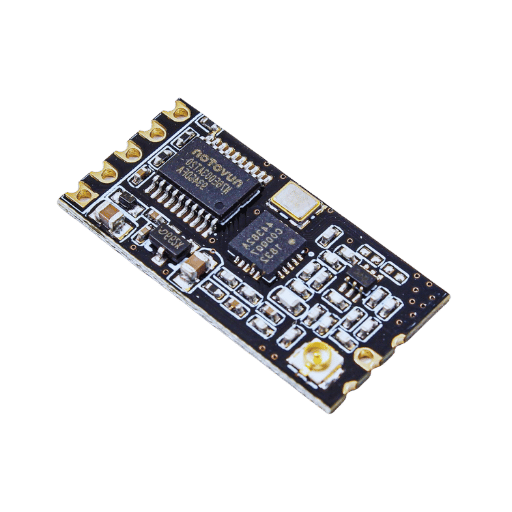
Gather Required Tools and Components: These are only some of the basic tools. Also, remember to bring a breadboard, jumper wires, the nRF24L01+PA+LNA transceiver module, and a couple of compatible microcontrollers, e.g., Arduino.
Connect the Transceiver Module to the Microcontroller: Connect VCC on the module to 3.3V on the microcontroller.
Connect the VCC of the module to 3.3 volts available on the microcontroller.
Next, connect the module’s first few pins to the host microcontroller.
Connect GND to GND.
The transceiver’s pinout includes CE, which can be connected to any available digital pin on the microcontroller, such as pin number 7.
Connect the CE pin to a digital one (for example, 7).
Then you will need to connect CSN to any available digital pin on the module for this example imagine that its pin number is 8.
Then, prepare to connect CSN to another pin, which must be set to digital mode again.
The SCK, MOSI, and MISO pins will also have to be connected to the corresponding SCK, MOSI, and MISO pins.
Connect the SCK, MOSI, and MISO to the corresponding SCK, MOSI, and MISI pins too.
Download and Install RF24 Library: At the Top of the window, search for the added Arduino boards with nRF24L01 transceiver programming.
Access the screenshot presentation I created to explain this within the library page.
Load and Upload Example CodeAccess example sketches in the RF24 library to work with the wireless module via breakout adapter.
Load the sketch and upload it to the microcontroller using Arduino IDE.
In this section, you will verify that this sub-assembly works and check data transfer between the modules.
Adding breakout adapters to your transceiver module is an intelligent way to simplify and standardize the wiring, especially when using a development board like Arduino. Usually, every breakout adapter will have the headers already soldered on the adapter so that making the connections with the pins is easier than it would be without the adapter. In order to use a breakout adapter, the assistant has to take the pins fitted on the breakout adapter and onions heads to the pins mounted on the microcontroller or development board by using the wiring guidelines, which are usually the same VCC to 3.3V, GND to GND, and the pin data CE, CSN, SCK, MOSI, MISO to the digital and SPI interface. This made a good combination that favored easy prototyping and testing, which means practical scramble and good interface in the wire communication devices work.
When issues emerge concerning your RF transceiver module setup, one of the primary steps is self-diagnosing and visually assessing all physical connections. Check all wires and pins and ensure screws are in their proper place, as a misaligned or littered wire may inhibit communication. Then, check to ensure the RF24 library is updated as it is installed in the Arduino IDE because old libraries might create issues. Check to ensure the board set is configured correctly in the Arduino IDE, as an installation of the wrong board or port will affect successful code upload. Even the sample code provided may also need adjusting according to your hardware configurations, such as the PIN, which may not be the same as that coded into the firmware. In the end, look up the serial monitor to see if there may be error messages that aid you in pinpointing the problems, thus aiding in easy troubleshooting measures aimed at enhancing effective and efficient data transmission and reception.

One of the methods to enhance the performance of wireless communication systems is to adopt several best practices. Start with the most suitable frequency and modulation scheme that will satisfy the requirements of your application in terms of distance and the amount of information. Employ directive antennas to improve signal quality and decrease the effects of other cellular devices around. Employ a data validation process and a data encoding method to protect its contents. Place the devices in an optimal location, and use RF planning software for expected signal placement without blockage. Also, update software and overhaul wireless system operational tools to accommodate new technologies changing the current interface of communications.
There is a great need to combine different security solutions to achieve adequate security in wireless systems. First, strong encryption protocols such as WPA3 over Wi-Fi should be applied to cover data in motion. Always ensure all the devices are updated by their respective software and firmware to fix vulnerabilities and increase security features. You can also isolate sensitive information using network segmentation and reduce the number of points of entry that can be exploited. Apply strong network access policies to involve highly secured methods such as multi-factor authentication to confirm identities before network access. Above this, there is a need to conduct net monitoring of cigarette searches for attempts and breaches and alarms on intrusion detection. These factors help protect wireless networks from various types of threats that are continually changing.
If you want to improve the reach and functionality of wireless systems, think of using mesh networking systems, where multiple nodes that interconnect with each other extend coverage. Upgrading to the latest Wi-Fi standards, Wi-Fi 6 offers improved range and performance thanks to new technologies, including beamforming and broader bands. Further, using range extenders or installing more access points where ranges can be problematic will boost the stability of the connection in the target region. A site survey will determine any interfering sources for the relocation of devices to optimize the strength and efficiency of the system.
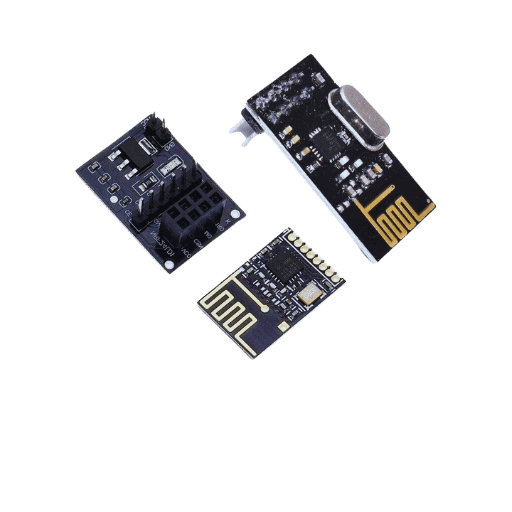
The focus of most of the innovations in transceivers of the 5G technology is uplink and downlink data transmission speed and reliability along with lower latency. Development of the new mm-wave spectrum is one among the new developments; as mobile phone networks have much more bandwidth than earlier stages, data rates can be higher, and more devices can connect over the network. Also, considerable leveraging of Massive Mimo techniques is done where the transmitter and receiver are equipped with different antennas to enhance communication effectiveness and data capacity. Another significant innovation is beamforming technology, which enhances the degree to which devices are connected due to the capability of transceivers to focus the directional signals on specific devices, thus minimizing the odds of signal interference. All these developments as a system allow 5G networks to support the new applications that are coming up, such as augmented reality, smart cities, and the next-generation IoT systems.
The advancements in the RF transceiver modules concentrate mainly on performance enhancement, integration, and reduction size for future communication systems design. There is a progressive use of other high-frequency RF transceiver components such as gallium nitride (GaN) and silicon-germanium (SiGe) semiconductor materials that are more power efficient and thermally conductive. Also, the utilization of software-defined radio helps in adapting transceiver modes that help accommodate a variety of reconfigurable systems and standards. System-on-chip (SoC) technology enables packing several RF components inside a single unit, lowering the cost and footprint while increasing reliability and performance. These developments are making it possible to design smaller and more efficient RF systems that can be used across various sectors, such as satellite communication, wireless communication, and the expanding IoT systems.
Wireless communication systems are designed to address the world’s increasing needs with new technologies like 5G, IoT, artificial intelligence, and wireless transceivers such as MakerFocus 10pcs NRF24L01. The system features are especially beneficial in intelligent cities where a network of sensors and machines assists in building urban structures with better traffic control, energy use, and security enhancement. Emerging also is the use of high-speed latency projects to enhance AR VR applications and their uses; this includes the par-insaler, simulator, and games. It is used for making wireless connections for remote monitoring and other applications such as telemedicine where the service is data-smart and communication dependant. In addition, wireless networks are used in industries’ automation through the IoT system with machines and robotics, enhancing the efficiency of operations and predictive maintenance. All these studies point to an enormous paradigm shift in the outlook and application of wireless communication systems in improving operation and growth schema in many industries.
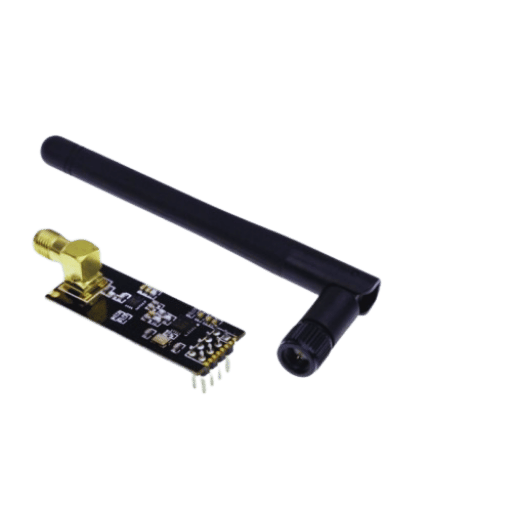
A: Hence, a radio transceiver is a device containing a transmitter and a receiver that operates by means of transforming electric impulses into electromagnetic waves for their transfer and the reverse process upon reception. Therefore, it facilitates communication in both directions in wireless communication networks, and it is very useful for smartphones, walkie-talkies, internet applications, and so on.
A: The parts that constitute a wireless transceiver RF module are the transmitter, receiver, antenna (for instance, an SMA antenna 2.4G), power amplifier, and signal processing unit. However, there are modules like the NRF24L01+PA+LNA Wireless transceiver RF transceiver, which also contains a power amplifier and low-noise amplifier for enhanced performance.
A: Wireless transceivers are fundamental in security systems as they allow wireless linkages between all the elements. These devices are useful in providing links from various sensors and cameras to the central control unit, which monitors these signals in real-time. The use of wireless communication, in this case, makes for more flexible installation due to less cabling, making the security more versatile and easy to deploy across different locations.
A: Breakout adapter onboard, for instance, in a module with breakout adapter onboard 3.3V regulators, tends to enhance the usage of the wireless transceiver module. It helps physically connect the module to other devices or breadboards, usually with built-in voltage converters, eliminating the necessity for external stabilizers even if the power provision is different. This is especially essential during the initial stages of designing and putting together the module inside different projects.
A: Adding wireless communication capabilities to Arduino projects is simple with wireless transceivers and Arduino boards. For instance, an NRF24L01+PA+LNA RF wireless transceiver module is made to interface with Arduino. They usually work with the SPI interface and can be used with Arduino libraries. This enables inventors and enthusiasts to make many wireless projects, for instance, remote sensors or even robots.
A: For instance, a wireless transceiver module with an SMA antenna, such as the one using a 2.4G 1100m SMA antenna, has its merits. First, the SMA (SubMiniature version A) provides easy interfacing with one or more antennas, enhancing range and performance. This modularity feature means that users can upgrade antennas whenever necessary, which may increase the distance range of available communication or fine-tune it for specific places without changing the whole module.
A: Although wireless transceivers and ethernet support data transfer, they do so over different mediums. Wireless transceivers allow mobility and flexibility, meaning devices can communicate wirelessly without the need for physical connections. This is applicable in scenarios where wiring is not possible or desired. Ethernet, on the other hand, enhances most stable connections, which can be faster but requires cabling. The preference for the two varies between range required, movement, amount of data to be transmitted, and conditions.